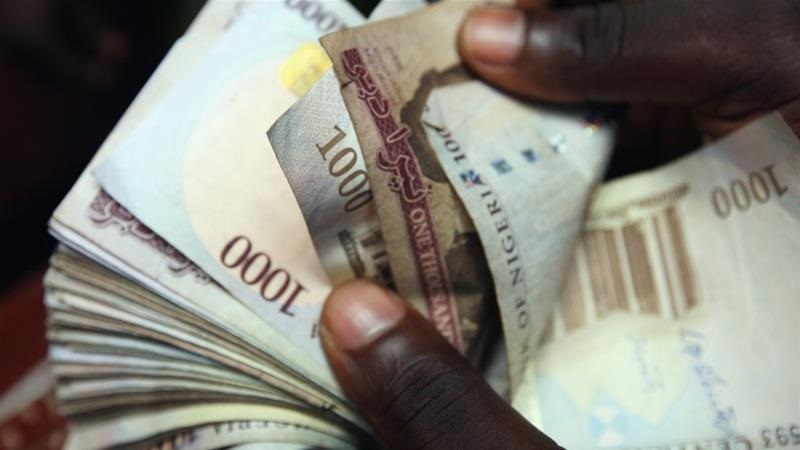Nigeria’s incessant money printing is a looming disaster
By: Odewale Abayomi Recently, Godwin Obaseki, the Edo State governor, claimed that the federal government printed an additional 60 billion naira to augment federal allocation to states in March. To prove it, a report by Dataphyte showed Nigeria printed over 19.03 trillion naira since 2015. The habit has spanned over five years, with the bulk […]

By: Odewale Abayomi
Recently, Godwin Obaseki, the Edo State governor, claimed that the federal government printed an additional 60 billion naira to augment federal allocation to states in March.
To prove it, a report by Dataphyte showed Nigeria printed over 19.03 trillion naira since 2015. The habit has spanned over five years, with the bulk of the money invested in recurrent expenditures without matching economic activities. However, rather than solve the fiscal problem, unrestrained reliance on money printing and the resultant inflationary pressure portend danger for Nigeria’s essentially fragile economy.
- APPLY: Federal Roads Safety Corps recruitment 2021
- There was agreement Buhari will hand over to Tinubu – Ex-CPC chair, Hanga
On rare occasions, to raise money outside taxation and borrowing at low points like health and economic crises, money printing is not entirely wrong when used cautiously. At worst, as a last resort to jump-start a struggling economy by investing the bulk of the money in rescuing vital economic drivers and ailing productive sectors.
For instance, the US and UK governments adopted monetary tools to revive their economies during the 2008 economic meltdown. As part of interventions amidst health and financial crises, the UK printed over £875 billion while the US printed more than $3 trillion in 2020.
The newly minted money was designated to buy up government debt, a move in taming inflation, keeping the interest rates low, focusing on boosting production. Their monetary tools were invested massively in assets and backed up by production. In Nigeria, with substantial infrastructural deficits, the money is expended on a bloated government, recurrent expenditures and loan maintenance.
When the government prints money faster than actual output (GDP) growth, naira is bound to depreciate. The influx of cash in circulation would drive up the prices of goods. The looming consequence is hyperinflation. In effect, Nigeria is an import-dependent country, and this will mount pressure on the naira and trigger the demands for dollars.
As of March, Nigeria’s inflation stands at 18.17% more than the Central Bank’s limit of 9%. The prevailing inflation can be connected with the printing of money.
In regulating money printing and other operations, the Central Bank of Nigeria set up the CBN Act of 2007. According to section 38(2) of the act: The total amount of such advances outstanding shall not at any time exceed 5% of the previous year’s actual revenue of the Federal Government. But, how sincere are CBN and the government to this act?
The federal government realized ₦9.5 trillion in 2018. And in 2019 – an election year, CBN printed ₦3.52 trillion, which constitutes 37.05% of 2018 revenues, more than 5% limit CBN act. Similarly, the government accessed N2.8 trillion, which forms 62.2% of 2019 revenues of N4.5 trillion with neither matching economic activities nor repayment into the treasury. If not well managed, it could backfire.
The budget deficit has been recurrent since 2014. Government can not exit this economic nadir by reliance on the dwindling oil and printing of more money. When the Zimbabwean government printed more money faster than the real GDP, the country did not get richer but became enmeshed in a deep financial crisis. The value of money is predicated on the forces of demand and supply.
It is high time Nigeria embraced true federalism where every state is viable and in charge of its resources, thereby remitting monthly revenue to the federal government. This independence will enhance competitiveness within federating units, birthing innovation, creativity and ingenuity in generating funds. For state governments to independently embark on critical infrastructural developments, the federal legislature should amend the exclusive legislative list, arrogating enormous power to the federal government.
The primary sustainable approach is for the government to boost revenue from diverse sources and as well cut bogus government spending. At the same time, the government should explore agricultural, solid mineral, technology, infrastructure and manufacturing sectors. Money printing is catastrophic. Nigeria must brace up to avert the looming consequence of hyperinflation.
Odewale Abayomi is a writing fellow at African Liberty. He tweets @ODEWALEAbayomi
